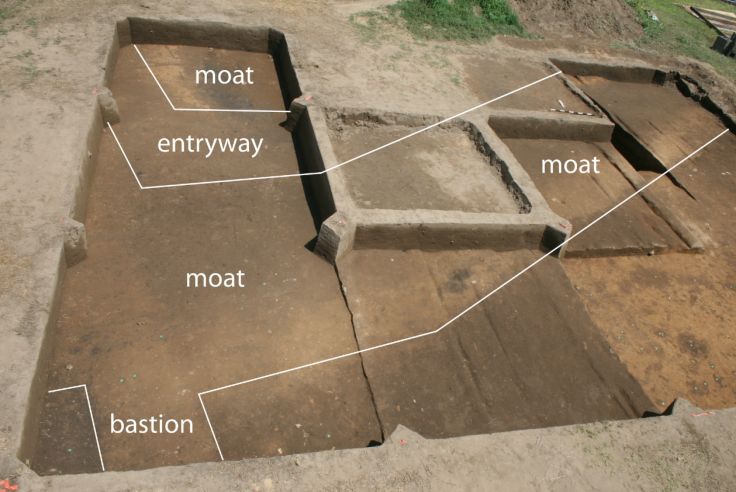‘Long Lost Fort San Juan’ Discovered In Appalachian Mountains, Oldest Inland European Fort Built 40 Years Before Jamestown [PHOTOS]


A team of archaeologists has uncovered a nearly 450-year-old Spanish fort built in North Carolina’s Appalachian Mountains. The site was found near Morganton, N.C., nearly 300 miles from the Atlantic Coast.
Built at the foothills of the Appalachian Mountains in 1567, nearly 40 years before the Jamestown settlement, it is one of the earliest ones built in the region by Europeans. Known as Fort San Juan, the site was built by Spanish Captain Juan Pardo and his men. It was occupied for less than 18 months before being destroyed by Native Americans, University of Michigan archaeologist Robin Beck said in a statement.
Archaeologists since 2004 have been excavating the site, which also belonged to an Indian settlement known as Joara; however, it was only last month when they inadvertently discovered the remains from Fort San Juan.
"We have known for more than a decade where the Spanish soldiers were living," archaeologist Christopher Rodning, of Tulane University, said. "This summer we were trying to learn more about the Mississippian mound at Berry, one that was built by the people of Joara, and instead we discovered part of the fort. For all of us, it was an incredible moment."
Using x-ray images and large-scale excavations, archaeologists were able to identify the fort’s defensive moat. Other discoveries include a 15-foot V-shaped feature, Spanish artifacts like iron nails, tacks, pottery and an iron clothing hook.
Chester B. DePratter, an archaeologist at the University of South Carolina, observed when the discovery was made.
“I am certain that they have found the long lost Fort San Juan,” he said. “The coming years, as the moat and blockhouse inside are excavated, will be quite exciting.”
He said the fort is significant since it shows how deep the Spanish advanced inland by 1566, long before “the English built a fort as far inland as Fort San Juan, much less as far west as the French Broad River near Knoxville,” which took place in the 17th century, the New York Times reports.
Fort San Juan is one of six garrisons Captain Juan Pardo built in an effort to colonize the South. To date, Fort San Juan is the only one uncovered by archaeologists. The fort’s demise is believed to have happened 18 months after its construction. Indians in the region rebelled, torched all of its inhabitants, except Pardo, who managed to escape. Beck says “food and sex” were most likely the reasons behind the Indians uprising, he told the New York Times.
For archaeologist David Moore, of Warren Wilson College, who helped excavate the site, Fort San Juan sheds light on future events that took place between the U.S. and its major colonizer: the British.
"The events at Fort San Juan represent a microcosm of the colonial experience across the continent," he said. "Spain's failure created an opening that England exploited at Jamestown in 1607, when America's familiar frontier narrative begins. For Native Americans, though, this was the beginning of a long term and often tragic reshaping of their precolonial world."
© Copyright IBTimes 2025. All rights reserved.






















